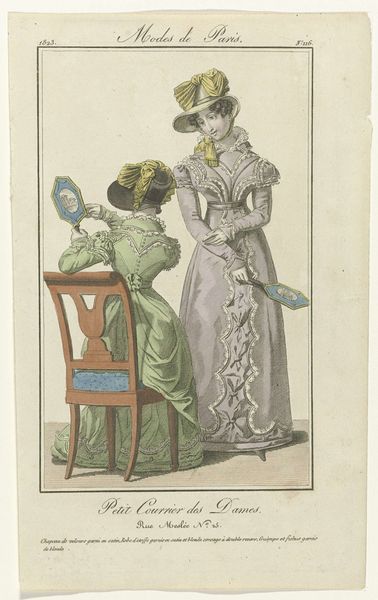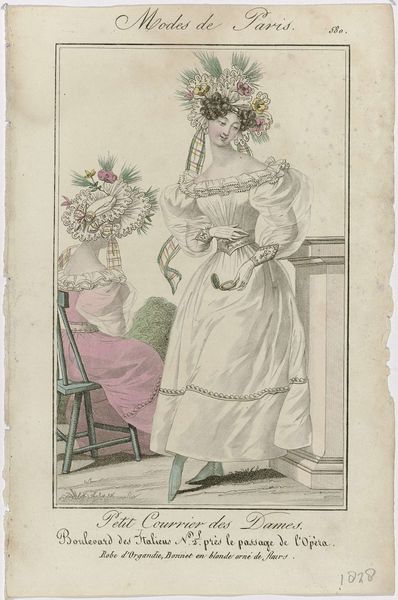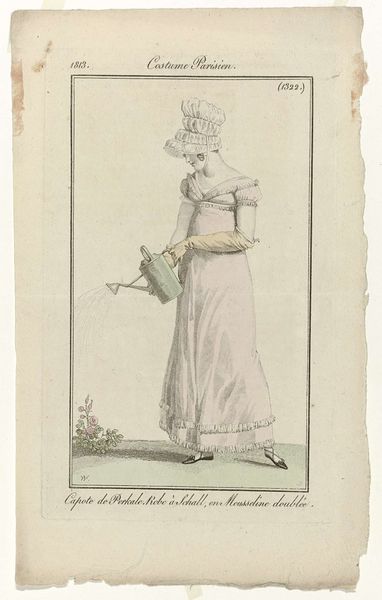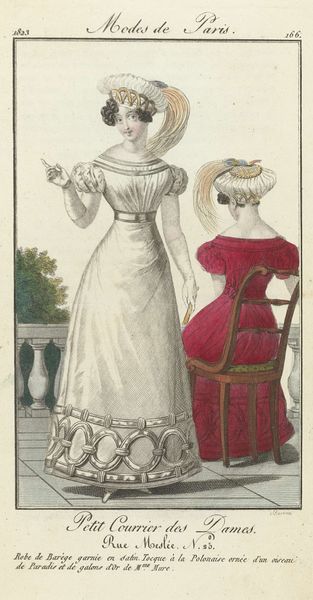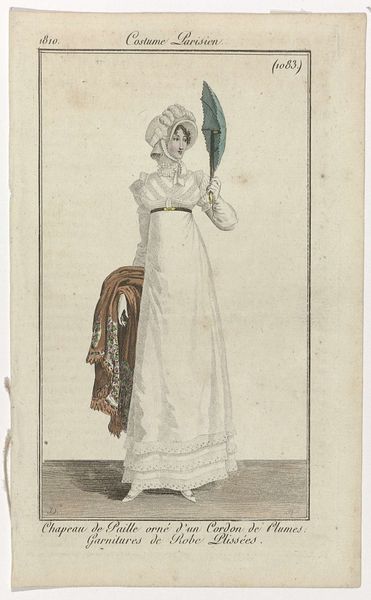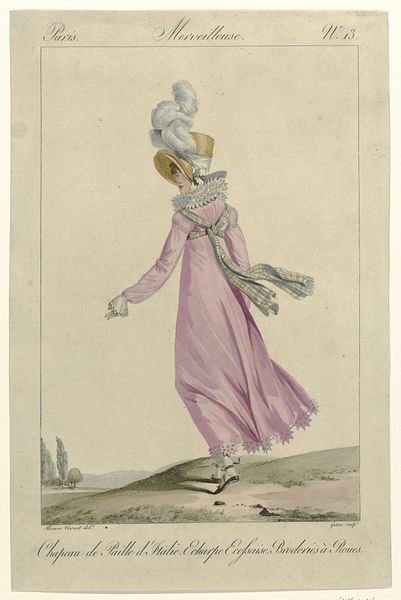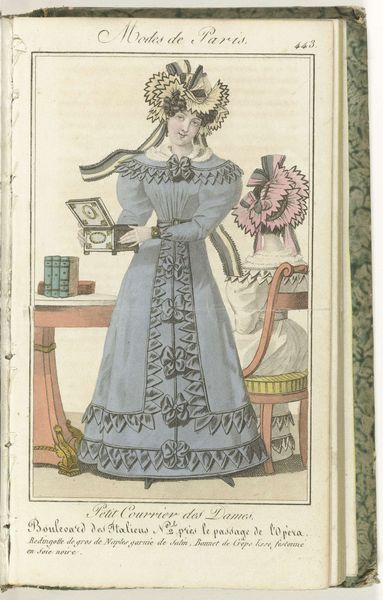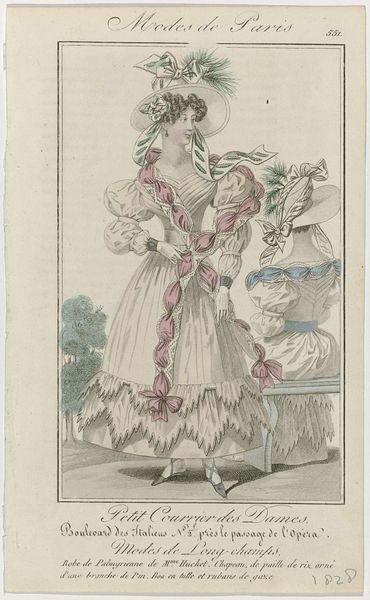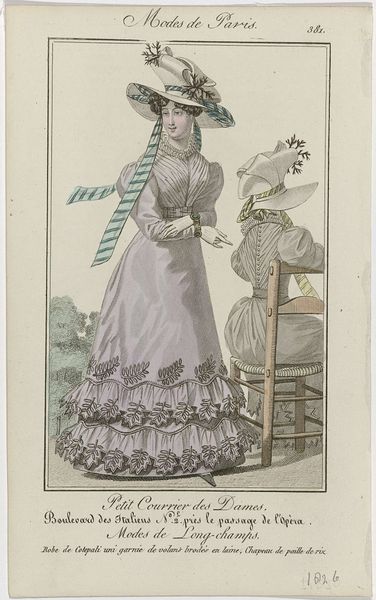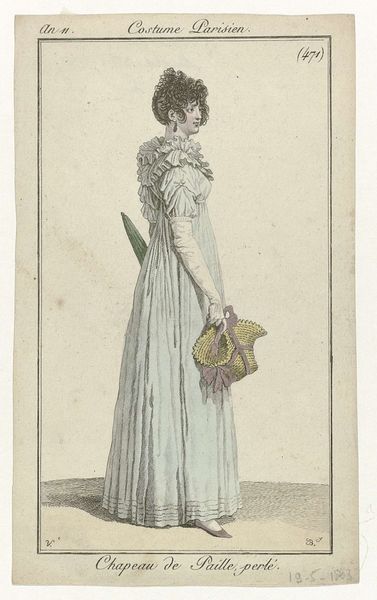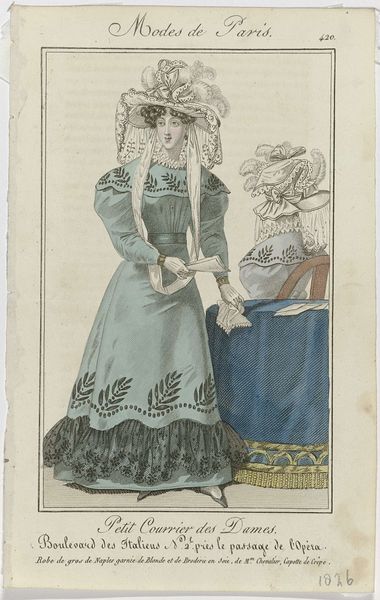
drawing, lithograph, print, etching
#
drawing
#
lithograph
# print
#
etching
#
genre-painting
#
dress
Dimensions: height 194 mm, width 115 mm
Copyright: Rijks Museum: Open Domain
Curator: Let's consider this print, "Petit Courrier des Dames, 1823, No. 173," dating from 1823. It presents itself as a fashion plate, composed via etching and lithography. Editor: It has this serene, almost reserved quality to it, doesn't it? The muted colors, the rather stiff poses...it gives me the impression of careful construction. It almost makes the wearers look a bit doll-like. Curator: Precisely. Each element, from the "Redingote Blouse en Merinos" as the description at the bottom states to the “Chapeau de Velours Plein,” projects deliberate codes. It reveals how cultural identities are performed and reinforced through garments. Consider, too, that in the depicted journal, "Petit Courrier des Dames," the image itself plays as a vector in that symbolic construction. Editor: Thinking about these dresses, the print really calls attention to the materiality. The fine lines, the layering... I imagine these were painstakingly produced objects themselves, these merino wool dresses and velvet hats—the product of skilled labor and a complex network of textile production, distribution, and finally consumption. Curator: Certainly. Each element – the cut of the dress, the shape of the hat—becomes a signal within a visual language. It denotes status, aspiration, and perhaps even a claim to participate in a certain fashionable ideal promoted by periodicals. Editor: That reminds me how crucial the printing process was, as you say. The print acts as a template for aspiring consumers. There’s a direct link from the workshop crafting those outfits, to the artisans replicating the images through etching, to their eager readers and then purchasers. A whole system of creating, consuming, and reflecting. Curator: Right. And this, in turn, feeds into that self-reflective loop: fashion becomes both a personal choice and a participation in a wider cultural narrative about idealized beauty and proper femininity in 1820s Paris. The plate reflects back certain attitudes towards fashion, class, and display itself. Editor: It’s not just about beautiful dresses; it's about an industry and the lives enmeshed within. So, next time I flip through a magazine, I’ll recall this fashion print. Curator: And so shall I, as a symbolic act that weaves together commerce, identity, and artistic representation.
Comments
No comments
Be the first to comment and join the conversation on the ultimate creative platform.


